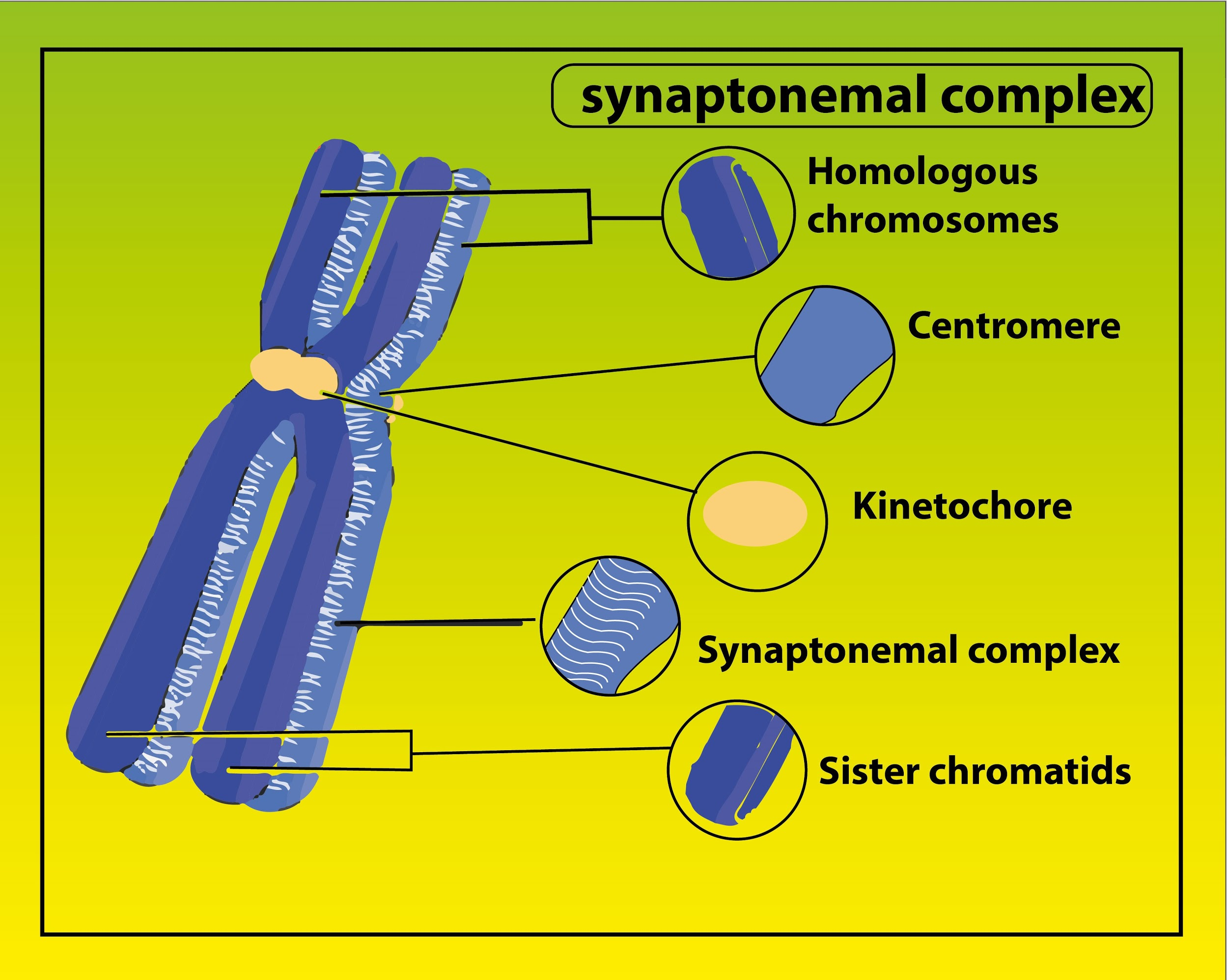
Synapsis occurs during which phase?
(a)Anaphase I
(b)Telophase I
(c)Prophase I
(d)Cytokinesis
Answer
574.8k+ views
Hint: This is the most longest and complex phase in meiosis I under karyokinesis. This phase is the longest phase which includes five sub-phase: leptotene, zygotene, pachytene, diplotene, and diakinesis.
Complete answer:
Zygotene is the second stage of prophase-I in which the process of pairing between homologous chromosomes at end to end takes place, which is known as synapsis. The synaptonemal complex is formed during these zygotene stages which results in the pairing of homologous. The formation of bivalents occurs in this phase.

Additional Information:
Prophase I is the longest in duration when compared with the prophase in mitosis, which takes about 85-95 %of the total time for meiosis. The first of prophase-I is leptotene where the chromosome begins to condense. The second stage is zygotene also known as zygonema marked by the beginning of pairing between homologous chromosomes and ends with complete pairing. The third stage is pachytene in which synapsis takes place. The fourth stage is diplotene or diplonema in which DNA recombination is completed. The last stage of prophase-I is diakinesis where the chromosome becomes shorter and thicker because of condensation and marked by the disappearance of the nucleolus and nuclear envelope at the end of prophase I.
So, the correct answer is, ‘prophase I.’
Note: -The term ‘meiosis’ was coined by J.B. Farmer and J.E.S. Moore in 1905.
-Meiosis is a special method of division that occurs in the maturation of the sex cells, which results in each daughter's nucleus receives half the number of chromosomes characteristic of the somatic cell of the species.
-Meiosis is divided into two events: meiosis I or reductional division and meiosis II or mitotic division.
-The difference between mitosis and meiosis is that sister chromatids remain joined after metaphase in meiosis I but in mitosis, they separate.
Complete answer:
Zygotene is the second stage of prophase-I in which the process of pairing between homologous chromosomes at end to end takes place, which is known as synapsis. The synaptonemal complex is formed during these zygotene stages which results in the pairing of homologous. The formation of bivalents occurs in this phase.

Additional Information:
Prophase I is the longest in duration when compared with the prophase in mitosis, which takes about 85-95 %of the total time for meiosis. The first of prophase-I is leptotene where the chromosome begins to condense. The second stage is zygotene also known as zygonema marked by the beginning of pairing between homologous chromosomes and ends with complete pairing. The third stage is pachytene in which synapsis takes place. The fourth stage is diplotene or diplonema in which DNA recombination is completed. The last stage of prophase-I is diakinesis where the chromosome becomes shorter and thicker because of condensation and marked by the disappearance of the nucleolus and nuclear envelope at the end of prophase I.
So, the correct answer is, ‘prophase I.’
Note: -The term ‘meiosis’ was coined by J.B. Farmer and J.E.S. Moore in 1905.
-Meiosis is a special method of division that occurs in the maturation of the sex cells, which results in each daughter's nucleus receives half the number of chromosomes characteristic of the somatic cell of the species.
-Meiosis is divided into two events: meiosis I or reductional division and meiosis II or mitotic division.
-The difference between mitosis and meiosis is that sister chromatids remain joined after metaphase in meiosis I but in mitosis, they separate.
Recently Updated Pages
Master Class 12 Business Studies: Engaging Questions & Answers for Success

Master Class 12 Economics: Engaging Questions & Answers for Success

Master Class 12 English: Engaging Questions & Answers for Success

Master Class 12 Maths: Engaging Questions & Answers for Success

Master Class 12 Social Science: Engaging Questions & Answers for Success

Master Class 12 Chemistry: Engaging Questions & Answers for Success

Trending doubts
What is meant by exothermic and endothermic reactions class 11 chemistry CBSE

Which animal has three hearts class 11 biology CBSE

10 examples of friction in our daily life

One Metric ton is equal to kg A 10000 B 1000 C 100 class 11 physics CBSE

1 Quintal is equal to a 110 kg b 10 kg c 100kg d 1000 class 11 physics CBSE

Difference Between Prokaryotic Cells and Eukaryotic Cells




